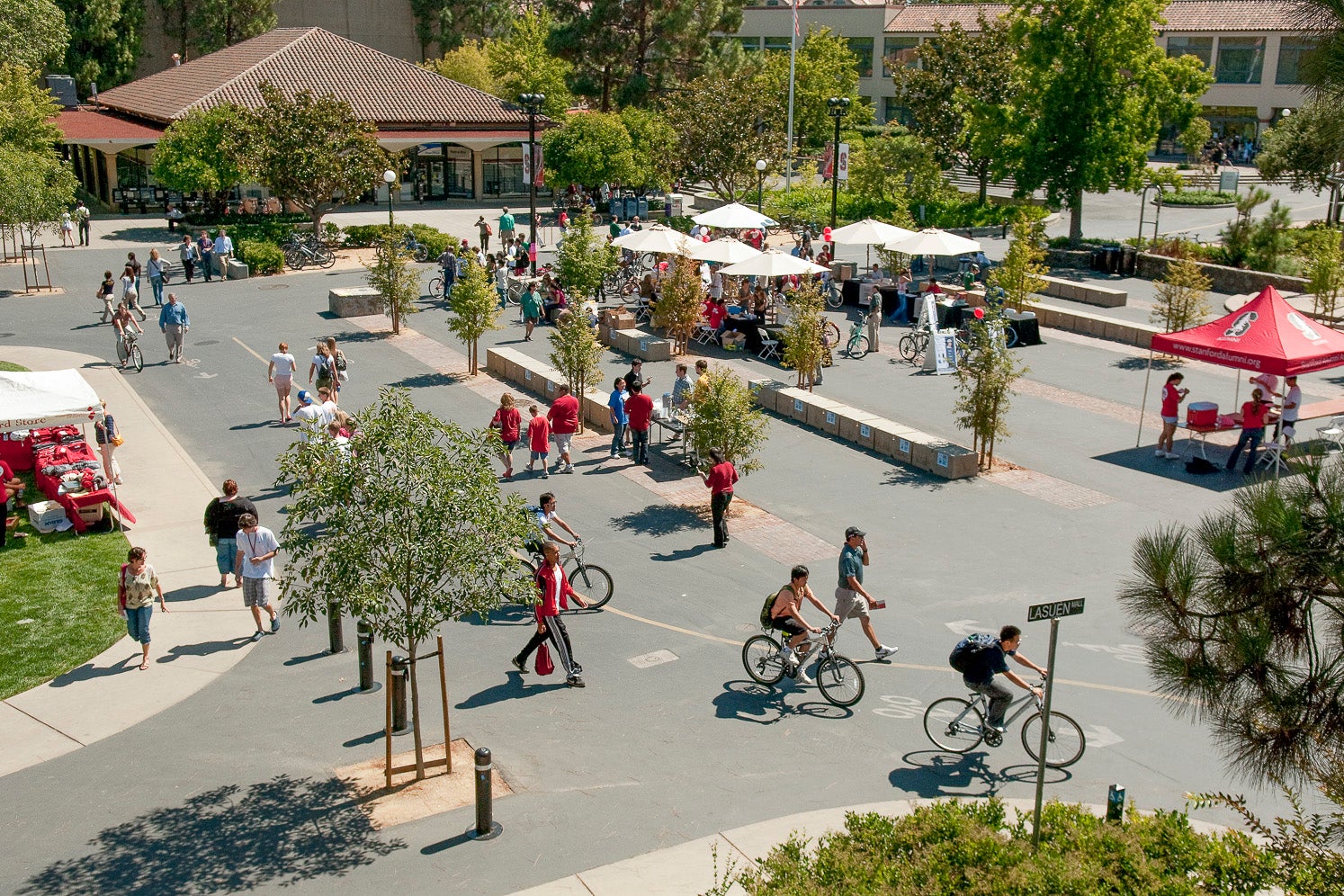The effort to transform the White Plaza region into a vibrant town center and hub of the university is currently in the initial planning phase. The design team leading the project will spend the next few months gathering information and ideas from the campus community to identify the main programs, functions and activities for the space. The team expects to move forward with concrete options by early 2020.

White Plaza will be redesigned to foster social engagement and the exchange of ideas, thereby supporting the university’s academic mission by building intellectual connections. (Image credit: L.A. Cicero)
The project is deeply connected to the university’s academic mission and is one of the many initiatives focused on implementing the university’s long-range vision. The project’s leaders stress the need for campus involvement and invite all members of the Stanford community to attend a forum on Wednesday, April 24, at 5 p.m. at Tresidder Memorial Union.
“This town hall meeting is an opportunity to learn about the project and help us brainstorm,” said Matthew Tiews, associate vice president for campus engagement in the Office of the President. “We’re seeking broad input from the entire Stanford community – including students, postdocs, faculty, staff, alumni and visitors.”
Tiews, who previously served as associate vice president for the arts, is leading the Town Center design team. Since his appointment earlier this year, his team has been gathering feedback and ideas from various stakeholders and community members through meetings and focus groups. Through those initial discussions, the team has identified four main areas that will provide the basis for further feedback: the exchange of ideas; social life, food and culture; group spaces; and retail, services and support.
These focus areas will support the project’s main goal of fostering social engagement and the exchange of ideas, which in turn support the university’s academic mission by building intellectual connections that fuel Stanford. Tiews said his team’s research is guided by deep considerations for the ways in which those connections are formed.
“The informal exchanges that people have are an important part of learning and discovery,” Tiews said. “They’re just as important as the formal learning in classrooms and labs, and we want to be thoughtful about how we create those opportunities.”
In addition to strengthening intellectual growth, building strong social connections supports the university’s goal of improving the overall health and well-being of its students and other community members. Furthermore, in a region known for intense creative and intellectual competitiveness, Tiews hopes the new town center will be a model for other organizations interested in creating inspiring and supportive spaces.
“Especially in the heart of Silicon Valley, we are very conscious of the need to re-focus on human connection and reimagine productive modes of interaction and exchange for the 21st century,” Tiews said. “We hope that there will be some outcomes from this project that will be valuable to others working on similar goals nationally and internationally.”
In addition to working closely with students, faculty and staff, Tiews’ team includes University Architect David Lenox. The team is also working with the Land, Buildings and Real Estate division on the planning. Soon, they will be working with a consultant to begin mapping out concrete options for the project’s scope and phasing. By early next year, Tiews expects to have more specific ideas and a solid timeline for the project.
In the meantime, the campus community is encouraged to attend Wednesday’s town hall meeting. You can also submit ideas and comments about the project or sign up to be a part of a focus group session using this form. More information about the Town Center project is available on the Our Vision website.